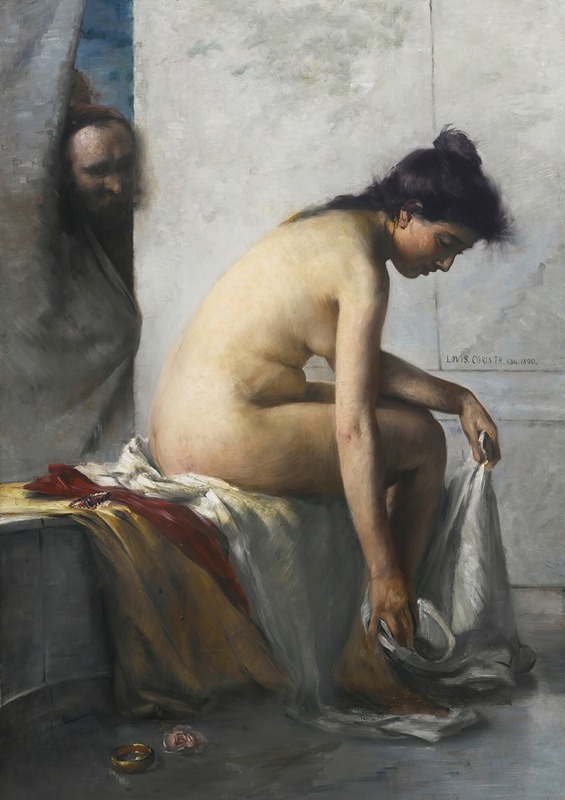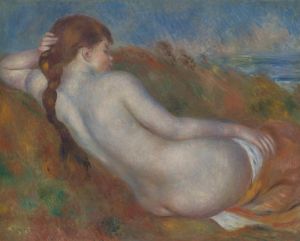
Susanna Im Bade
A hand-painted replica of Lovis Corinth’s masterpiece Susanna Im Bade, meticulously crafted by professional artists to capture the true essence of the original. Each piece is created with museum-quality canvas and rare mineral pigments, carefully painted by experienced artists with delicate brushstrokes and rich, layered colors to perfectly recreate the texture of the original artwork. Unlike machine-printed reproductions, this hand-painted version brings the painting to life, infused with the artist’s emotions and skill in every stroke. Whether for personal collection or home decoration, it instantly elevates the artistic atmosphere of any space.
Lovis Corinth's painting Susanna im Bade (Susanna in the Bath) is a notable work by the German artist, created in 1890. Corinth, a prominent figure in the transition from Impressionism to Expressionism, was known for his dynamic brushwork and vivid use of color. This painting is one of his early works and reflects his academic training as well as his interest in classical and biblical themes.
The subject of the painting is derived from the biblical story of Susanna, found in the Book of Daniel. The story tells of a virtuous woman, Susanna, who is spied upon by two elders while bathing. When she refuses their advances, they falsely accuse her of adultery. The tale has been a popular subject in Western art for centuries, often used as a pretext for exploring the female nude within a moral or allegorical framework.
In Susanna im Bade, Corinth depicts Susanna in a naturalistic style, characteristic of his early academic period. The painting portrays Susanna seated, partially draped, with a contemplative expression. The setting is intimate, with a focus on the figure rather than elaborate surroundings. Corinth's treatment of the nude figure demonstrates his technical skill and attention to anatomical detail, reflecting the influence of his academic training in Munich and Paris.
This work predates Corinth's later, more expressive style, which became prominent after his stroke in 1911. During his early career, Corinth was influenced by the traditions of 19th-century realism and the academic approach to historical and biblical subjects. Susanna im Bade exemplifies his ability to balance classical themes with a modern sensibility, a hallmark of his evolving artistic identity.
The painting is part of Corinth's broader exploration of the human figure and his engagement with themes of vulnerability, beauty, and morality. While it is not as widely known as some of his later works, Susanna im Bade remains an important example of his early oeuvre and his engagement with traditional artistic themes.
As of now, the painting is housed in a private collection, and its public exhibitions have been limited. Corinth's work, including Susanna im Bade, continues to be studied for its contribution to the development of modern German art and its reflection of the cultural and artistic transitions of the late 19th and early 20th centuries.


















